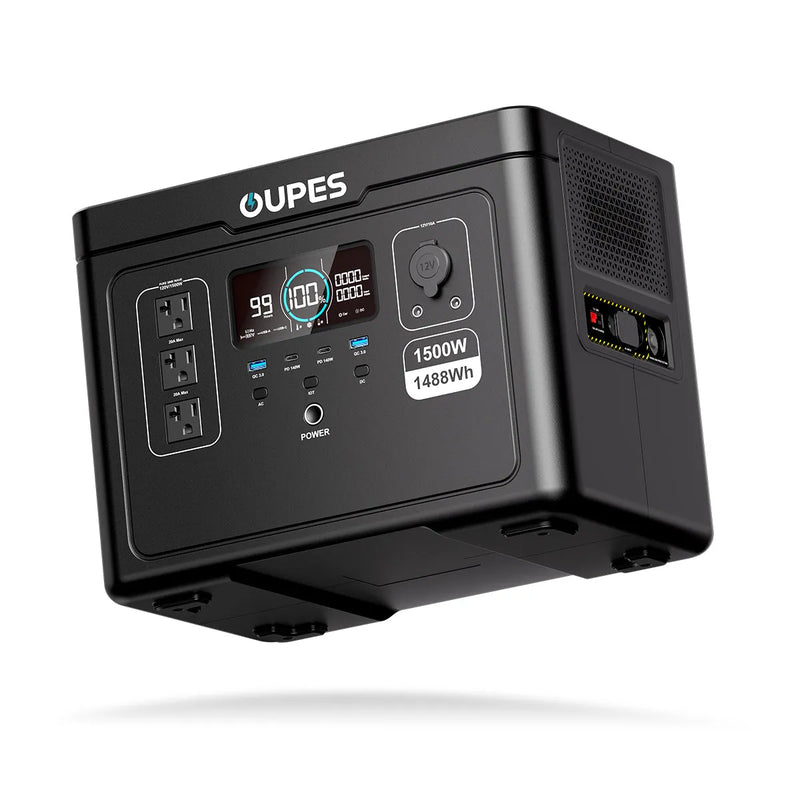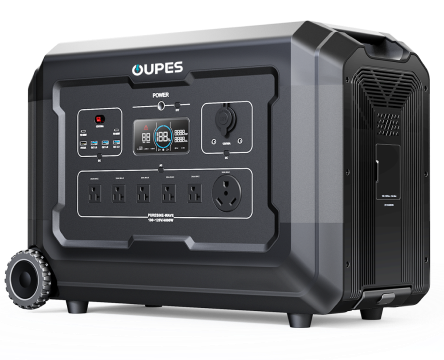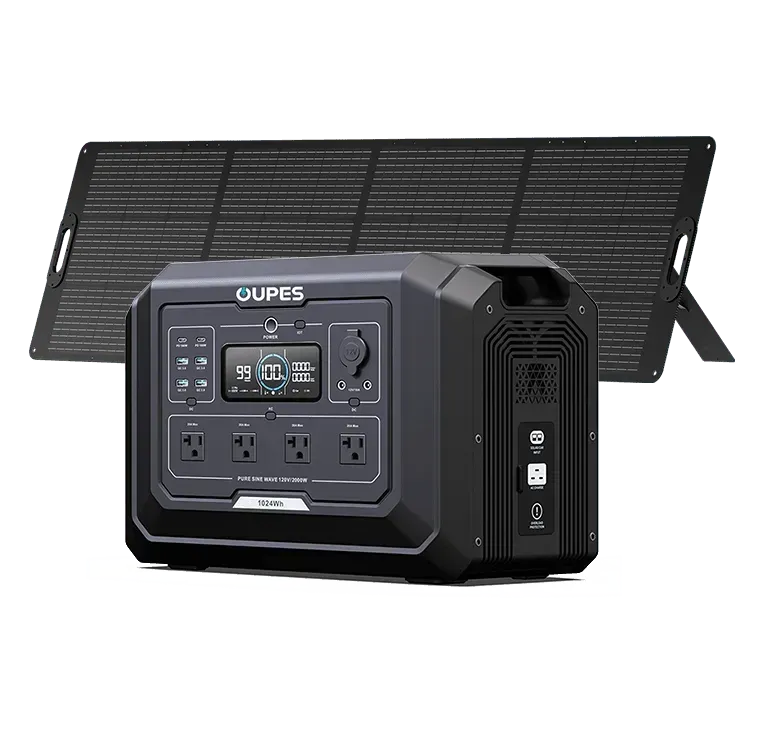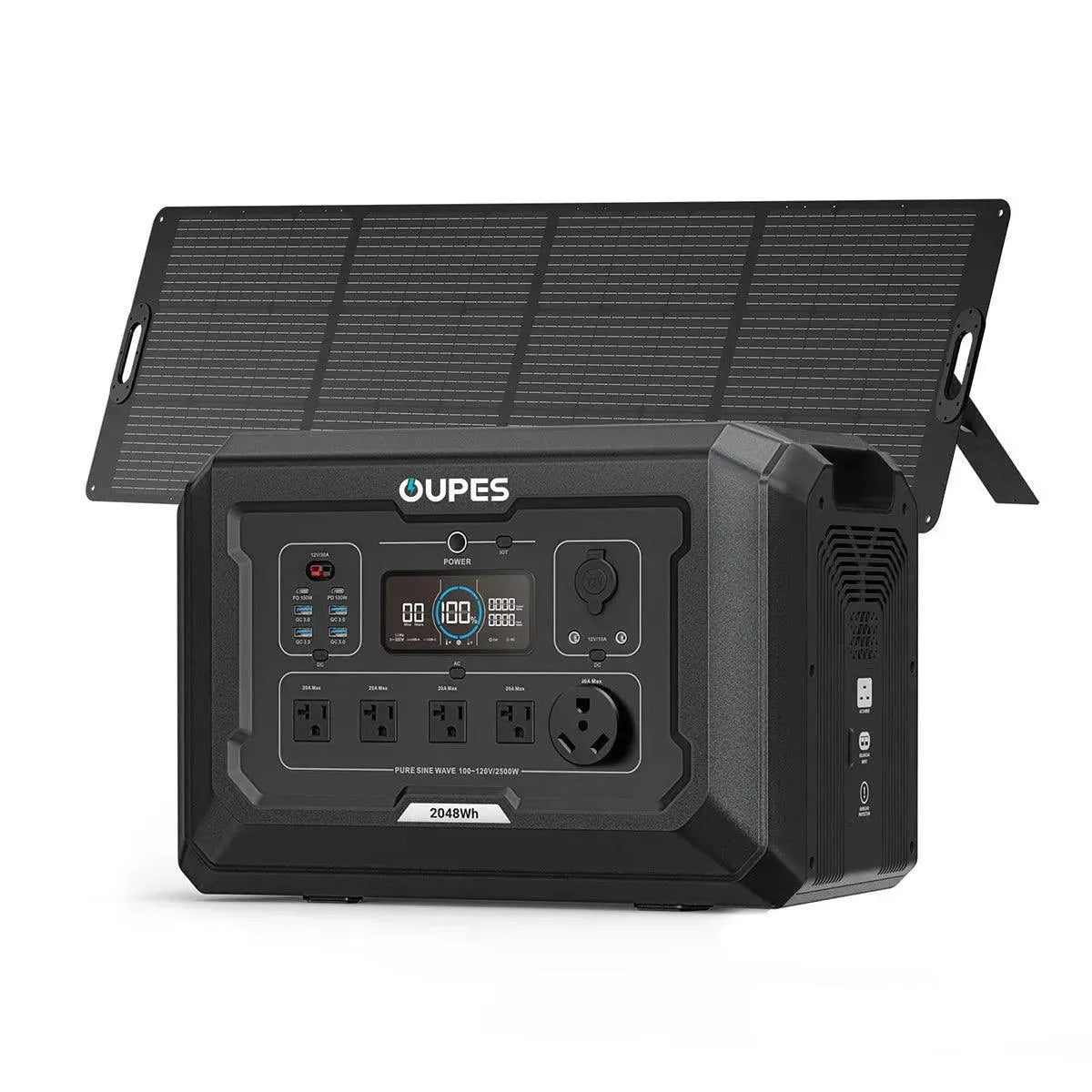
When the grid fails during a historic winter storm, your home transforms from sanctuary to survival zone. Freezing pipes threaten to burst, food spoils rapidly, and medical devices fall silent. As extreme weather events increase by 300% since 1980, backup power shifts from luxury to necessity—but which solution truly delivers? Beyond marketing hype lies a complex landscape where fuel types, battery chemistry, and smart management determine whether you'll ride out disasters comfortably or endure dangerous compromises.
Generator Options: Fuel Types and Operational Realities
Portable gasoline generators offer immediate affordability but conceal hidden limitations. Their 3-8kW output seems sufficient until you calculate runtime: A 5-gallon tank lasts merely 8 hours at 50% load. During week-long outages common after hurricanes, you'll risk treacherous fuel runs every night while storing volatile gasoline poses fire hazards. Noise becomes another penalty—70-90 decibels creates neighborhood tension, equivalent to a lawnmower running continuously beside your bedroom window.
Standby natural gas generators solve refueling dilemmas with utility connections, automatically activating during outages. Yet installation complexities emerge: They require concrete pads, gas line upgrades, and transfer switches costing $10,000-$15,000. More critically, gas supply isn't infallible. During the 2021 Texas freeze, compressed pipelines left generators dead. Propane variants offer better fuel stability but demand massive 500-gallon tanks for multi-day coverage, consuming valuable yard space. Diesel units excel in longevity but emit toxic fumes requiring professional ventilation systems.
Generator maintenance forms a non-negotiable ritual. Gasoline units need carburetor cleaning every 30 days of disuse, while standby models require quarterly oil changes and load testing. Failure here causes heartbreaking scenarios: After Hurricane Ida, 60% of standby generators failed due to neglected maintenance. For urban dwellers, local ordinances may restrict runtime—Los Angeles County bans gasoline generators after 10 PM. These realities make generators ideal for infrequent, short outages but problematic for sustained resilience.
Battery Backup Systems: Silent Energy Reservoirs
Modern lithium iron phosphate (LFP) batteries revolutionize home backup with zero emissions and instant response. Unlike generators requiring warm-up time, systems like OUPES Mega 5 activate within 20 milliseconds—preventing computer reboots or HVAC system lockouts. Their modular design allows stacking capacity from 10kWh to over 30kWh, scaling with your needs. Silent operation maintains neighborhood relations during prolonged outages while indoor installation eliminates weather vulnerabilities.
Depth of discharge (DoD) dramatically affects usable capacity. While lead-acid batteries degrade if drained beyond 50%, LFP chemistry safely delivers 95% of rated capacity. This means a 10kWh OUPES unit provides 9.5kWh versus 5kWh from comparable lead-acid. Intelligent battery management systems (BMS) add crucial protection: They prevent cell imbalances that cause premature failure and optimize charging cycles to extend lifespan beyond 6,000 cycles—tripling traditional battery longevity.
Integration capabilities separate advanced systems from basic power banks. Smart battery systems prioritize circuits automatically during shortages—dimming lights while maintaining refrigeration. With Wi-Fi monitoring, you track consumption patterns via smartphone, receiving alerts before critical drain. Grid-tied models can participate in utility demand-response programs, earning credits by supplying power during peak hours. The initial $12,000-$20,000 investment stings less when factoring in 30% federal tax credits and decade-long warranties.
Thermal management remains paramount. Premium systems include self-heating functions for sub-zero operation, while liquid-cooled variants maintain optimal temperatures during high-output scenarios. Avoid units lacking temperature compensation—cold reduces capacity by 25%, leaving you dangerously underprepared during winter outages. Properly engineered batteries require minimal maintenance: Annual capacity calibration and terminal cleaning suffice versus weekly generator servicing.
Solar Hybrid Solutions: The Self-Sustaining Ecosystem
Pairing batteries with solar panels transforms backup power from finite reserve to renewable ecosystem. During daytime outages, panels directly power homes while replenishing batteries—enabling indefinite operation in sunny conditions. Unlike generator-dependent systems, this setup eliminates fuel costs and supply chain anxieties. Critical to success is "islanding" capability: Advanced inverters like those in OUPES systems safely disconnect from the grid while maintaining solar generation during blackouts.
Panel placement strategy maximizes outage resilience. South-facing arrays capture peak sun but fail during early/late emergencies. East-west configurations extend production windows, powering homes during breakfast blackouts or evening grid failures. Micro-inverters prevent partial shading from crippling entire systems—vital when storms leave debris on panels. For winter resilience, ground-mounted arrays avoid snow accumulation that paralyzes roof installations.
Battery-to-solar ratios determine sustainability. A 10kW solar array paired with 20kWh storage recharges fully in two sunny days—but undersizing batteries wastes solar potential. Smart charge controllers dynamically allocate surplus energy: During outages, they prioritize battery charging over non-essentials like pool pumps. Some systems even incorporate weather learning, pre-charging batteries to 100% when storm forecasts predict cloudy days ahead.
New technologies enhance this synergy. DC-coupled systems avoid efficiency losses by sending solar energy directly to batteries instead of converting to AC first. Hybrid inverters enable "pass-through" mode, where high-wattage appliances like ovens run directly from solar during peak production without draining reserves. These innovations reduce required battery capacity by 40% while delivering seamless backup during rolling blackouts.
Critical Load Management: Maximizing Limited Resources
Strategic circuit prioritization extends runtime exponentially. A typical home has 30+ circuits, but only 5-10 are truly essential during outages. Installing a critical load panel physically separates life-supporting circuits (refrigeration, medical devices, furnace) from non-essentials (saunas, AC units). This simple $1,500 upgrade can reduce power demand by 60%, transforming an 8-hour battery into a 20-hour solution.
Smart panels automate load shedding with millimeter precision. Systems like OUPES Nova monitor consumption in real-time, disengaging non-priority circuits when demand approaches battery limits. They learn usage patterns too—delaying dishwasher cycles until solar production peaks or temporarily disabling EV chargers during HVAC operation. These micro-adjustments add cumulative hours of backup without human intervention.
Efficiency retrofits deliver compounding benefits. Replacing a 15-year-old 5-ton AC (5.8kW) with an inverter model (2.2kW) more than doubles battery coverage. Heat pump water heaters use 70% less energy than resistance units, while induction cooktops outperform electric coils with 50% faster boiling at half the wattage. LED lighting conversions seem minor but collectively save 1kWh daily—enough to power a refrigerator for four extra hours during crises.
Behavioral adjustments complete the equation. Families trained to avoid simultaneous high-wattage activities (running hair dryers while microwaving) prevent system overloads. Strategic appliance use—employing slow cookers (150W) instead of ovens (3kW)—can reduce peak loads by 80%. Monitoring dashboards make these tradeoffs visible, showing how skipping one electric kettle boil preserves an hour of Wi-Fi connectivity.
Future-Proofing Your Backup Power Investment
Scalability ensures systems evolve with changing needs. Modular battery platforms allow adding 5kWh increments when installing energy-intensive additions like home dialysis machines or EV chargers. Forward-compatible inverters accept next-generation batteries, protecting against technological obsolescence. Cloud-upgradable firmware enables new features—recent OUPES updates added wildfire smoke detection that pre-charges batteries when air quality plummets.
Grid service participation offsets ownership costs. Virtual Power Plant (VPP) programs pay homeowners to share stored energy during regional peak demand. A 20kWh battery can earn $800 annually while strengthening community grids—funds that finance future capacity expansions. These controlled discharges actually benefit lithium batteries by preventing capacity degradation from long-term inactivity.
Emerging technologies promise radical improvements. Solid-state batteries projected for 2028 offer double current energy densities—20kWh in today's 10kWh footprint. AI-powered energy prediction engines analyze weather patterns and usage history to optimize charging cycles. Hydrogen fuel cells now integrate with solar-battery systems, providing zero-emission extended backup during prolonged cloudy periods. While future-proofing, prioritize systems with open communication protocols (CAN bus, RS485) that ensure compatibility with upcoming innovations.
Home backup power isn't a binary choice but a spectrum of solutions tailored to risk profiles and lifestyles. Urbanites facing occasional brownouts benefit from compact batteries, while off-grid homesteaders require solar-generator hybrids. The common thread? Intelligent design that aligns capacity with critical needs while anticipating tomorrow's challenges.
Your optimal solution emerges when you match technology to geography, usage patterns, and outage realities. Whether choosing whisper-quiet batteries for suburban tranquility or solar-generator combos for hurricane zones, strategic investment today ensures that when darkness falls elsewhere, your home remains a beacon of security and comfort.




























